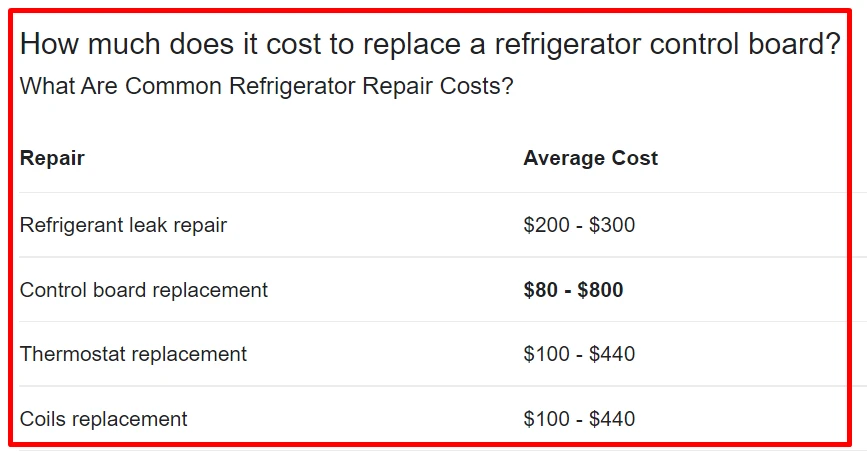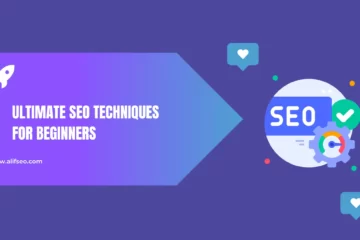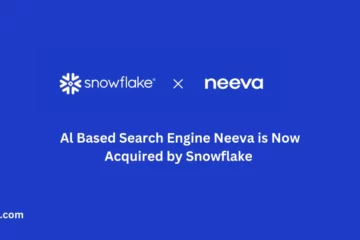Organic search engine optimization (SEO) is constantly evolving. As a result, it’s important to keep your knowledge of on-page SEO up to date.
On-page SEO is the process of optimizing individual web pages in order to rank higher and earn more relevant traffic in search engines. It is a fundamental part of any successful SEO strategy.
There are a number of factors that contribute to on-page SEO. These include things like page title and meta tags, as well as content quality and keyword density.
To ensure your on-page SEO is effective, it’s important to constantly prioritize and update your strategies. This can be a challenge, but it’s necessary to stay ahead of the curve and maintain a high ranking in search engines.
In this post, we will cover what on-page SEO is, and how does it work?
What Is On-Page SEO?
On-page SEO is the practice of optimizing a website to improve its search engine rankings and earn organic traffic. There are many factors that go into on-page SEO, but some of the most important include optimizing your headlines, HTML tags, and images.
It also means making sure your website has a high level of expertise, authoritativeness, and trustworthiness. By taking all of these factors into account, you can improve your website’s visibility in the search results.
However, it’s important to note that on-page SEO is just one part of the puzzle. In order to really rank well in the search engines, you’ll also need to focus on off-page SEO factors such as link building and social media engagement.
But if you want to give your website the best chance of ranking well, on-page SEO is a great place to start.
Is On-Page SEO Important?
On-page SEO is important for many reasons. One, it helps search engines understand your website and its content. This is done through things like HTML tags and structured data. Two, it helps identify whether your website is relevant to a searcher’s query. And three, it can help deliver search results that meet user intent.
Google, with its plethora of complex algorithms, is now much better at understanding what users are actually searching for when they type a query. This means that your website needs to be well-optimized according to the latest best practices. Additionally, you can’t simply ignore on-page SEO because you have more control when optimizing for on-site elements.
If you put effort into on-page strategies, you’ll see a boost in traffic and a rise in your search presence. So, if you want your website to be successful, on-page SEO is essential.
How Does On-Page SEO Work?
On-page SEO is the practice of optimizing a website for Google search with the goal of earning higher web traffic levels and improving the visibility of the site
The main aim of on-page SEO is to tell Google what your website is about so that it can show your site to people who are searching for relevant terms. For example, if you have a website about cats, you want Google to show your site to people who search for “cats” or “kittens.”
To do this, you need to use relevant keywords throughout your website, in the titles and headings, in the body text, and in the metatags. You should also have a good website structure, with a logical navigation system and clear hierarchy.
Good on-page SEO will make your website more relevant and visible to Google, which should lead to more traffic and more customers.
10 Essential On-Page SEO Factors Help Your Work Successful
Paying close attention to these 10 essential on-page SEO factors will help you create a successful and sustainable SEO strategy.
- E-A-T
What is E-A-T? E.A.T stands for Expertise, Authoritativeness, and Trustworthiness. It’s a Google algorithm that determines the quality of a website’s content. The better the E.A.T, the higher a website will rank in search results.
If you want your website to rank well on Google, you need to pay attention to E-A-T.
E-A-T stands for Expertise, Authoritativeness, and Trustworthiness, and it’s the framework that Google uses to assess content creators, webpages, and websites as a whole. In other words, Google wants to make sure that sites producing high-quality content are rewarded with better rankings, while sites that create low-quality content get less visibility.

There’s a clear relationship between what Google considers high-quality content and what appears in the search results. So whether you call it correlation or causation, E-A-T is somehow playing a role in Google’s organic search results. That means E-A-T should be a consideration in your SEO strategy.
Here’s a closer look at each element of E-A-T:
- Expertise: Is your content created by someone with expertise in the subject matter?
- Authoritativeness: Do you have credible sources to back up your claims?
- Trustworthiness: Is your content unbiased and free of any conflicts of interest?
f you can answer “yes” to all of these questions, then you’re on the right track. Keep producing high-quality content that is expertly written, well-researched, and trustworthy, and you should see your website’s ranking improve over time. “Source“.
- Title Tag
What is Title Tag? A title tag is an HTML element that specifies the title of a web page. Title tags are displayed in the browser tab and are also used by search engines to determine the title of a search result.

As a key element of each webpage, the title tag provides an initial indication of the page’s topic. The title tag is prominently displayed in the search engine results pages and in the browser window.
Although it has only a small impact on organic rankings, a missing, duplicate, or poorly written title tag can adversely affect your SEO results. Make sure to optimize your title tags for maximum impact.
- Meta Description
What is Meta Description? A meta description is a short description of a webpage that is used by search engines to generate results for a user’s search. The meta description is typically a sentence or two long and is meant to give the user an idea of what the page is about.

Meta descriptions are important for SEO because they can help improve your click-through rate and the perception of your website.
Google has said that meta descriptions don’t help with rankings, but there is evidence that they do help with other aspects of SEO.
If you optimize your meta descriptions correctly, you can improve your CTR and the perception of your website. This can lead to more organic traffic and more customers.
- Headlines
What is Headlines? Headlines are the most important part of an article. They are what grab the reader’s attention and make them want to read more. A good headline will make an article stand out from the rest and give the reader a reason to keep reading.
If you want your website content to perform well on search engines, then you need to start writing compelling headlines. A great headline can make the difference between a user clicking on your content or moving on to something else. That’s why it’s important to take the time to create headlines that are both informative and interesting.
Your headlines need to spark interest in order to stand out on the SERPs. This will entice users to click through and continue reading the rest of the content. By crafting compelling headlines, you can improve your SEO and get more traffic to your website.
- Header Tags
What is Header Tags? Header tags are used to break up content on a web page into sections. The most important section is typically at the top of the page and is denoted by the largest header tag, known as the H1 tag. Other sections of the page are typically denoted by smaller header tags, such as H2 and H3.

Header tags are a type of HTML element used to identify headings and subheadings within your content. Although they are not as critically important for your site rankings as they used to be, header tags still serve an important function.
They can indirectly impact your rankings by making your content easier and more enjoyable for visitors to read. In addition, header tags provide keyword-rich context about your content for the search engines.
Overall, header tags are an important part of SEO and should not be ignored.
- Quality and SEO Content
What is Quality and SEO Content? Quality content is content that is well written, informative, and relevant to your audience. SEO content is content that is optimized for search engines, so that your audience can easily find it.

One of the most important on-page SEO factors is the quality of your content. If you want your website to rank well, you need to create high-quality, informative, and engaging content.
Your content needs to be well-written and free of grammar and spelling errors. It should also be informative and provide value to the reader. In addition, your content should be engaging, which means it should be interesting and easy to read.
If you can create content that meets all of these criteria, you’ll be well on your way to ranking well in the search engines.
- Keyword Density
What is Keyword Density? Keyword density is the number of times a keyword or phrase appears on a web page divided by the total number of words on the page. It is used to measure how relevant a page is to a given keyword or phrase.

Keyword density is the percentage of times a keyword or phrase appears on a webpage, compared to the total number of words on the page. In the past, keyword density was an important ranking factor. However, it’s now less important than it used to be.
That said, keyword density is still a minor factor in SEO, and it can influence your organic rankings. If you have a high keyword density, it may be an indication that your content is keyword-stuffed, which can lead to a penalty from Google.
- Latent Semantic Indexing (LSI) Keywords
What is LSI Keyword? LSI keywords are keywords that are related to your main keyword. They help search engines understand the context of your content and can help you rank for long-tail keywords.

Latent Semantic Indexing (LSI) keywords are terms and phrases that are related to your main keyword. They help search engines understand the context of your content and can also help you rank for long-tail keywords.
Including LSI keywords in your content can help you rank higher in the search results and get more organic traffic. So if you’re not already using them, be sure to start incorporating LSI keywords into your content.
- Image Optimization
What is Image Optimization? Image optimization is the process of reducing the file size of a digital image without compromising the quality of the image. The goal of image optimization is to reduce the amount of data required to load and display the image.

Images are an important part of any website, and they can have a significant impact on your SEO. That’s why it’s important to optimize your images for the search engines.
When optimizing your images, be sure to include keywords in the file name and alt text. This will help the search engines understand what the image is about and how it relates to your content.
In addition, make sure your images are the correct size. Large images can slow down your website, which can lead to a penalty from Google. So be sure to optimize your images for both the search engines and your website’s speed.
- Internal Linking
What is Internal Linking? Internal linking is the process of linking one page on a website to another page on the same website.

Internal linking is the process of linking to other pages on your website. It’s an important part of SEO because it helps the search engines understand your website’s structure and improve the indexing of your pages.
In addition, internal linking can help improve your website’s usability and navigation. It can also help you rank for certain keywords and phrases.
Overall, an internal link is an important part of on-page SEO, and you should be sure to include it in your strategy.
Conclusion
On-page SEO is a fundamental part of any successful SEO strategy. There are many factors that contribute to on-page SEO, including things like page title and meta tags, as well as content quality and keyword density.
To ensure your on-page SEO is effective, it’s important to constantly update your strategies. This can be a challenge, but it’s necessary to stay ahead of the curve and maintain a high ranking in search engines.
In this post, we covered what on-page SEO is, and how does it work? We also discussed why on-page SEO is important, and we went over 10 essential on-page SEO factors.




